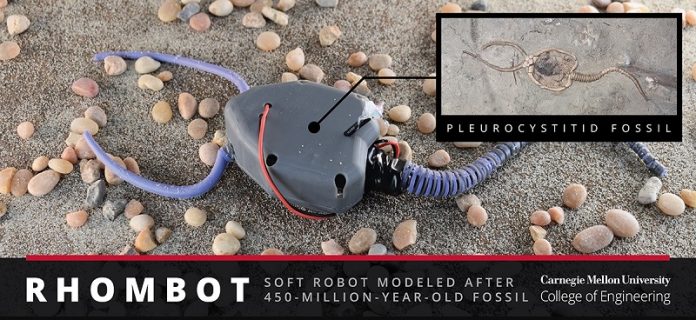
Imagine a time when humans hadn’t yet walked the Earth, and the seas were teeming with mysterious creatures.
Now, scientists are using cutting-edge technology to bring one of these ancient creatures back to life, well, in robot form!
A glimpse into the distant past
About 450 million years ago, the oceans were home to pleurocystitids, a type of marine organism. What’s special about them? They were among the first to move around using a muscular stem.
Fast forward to the present, and humans have been around for just 300,000 years. That’s just a tiny fraction (0.007%!) of Earth’s long history. The animals we see today are just a small part of all the creatures that have ever lived.
Paleobionics: A new way to study ancient life
Researchers have launched an exciting field called “paleobionics.” It’s all about using a blend of soft robotics and flexible electronics to recreate and understand ancient organisms. Think of it as a way to travel back in time to see how these creatures moved and lived.
Meet the Robotic Pleurocystitid
Phil LeDuc and Carmel Majidi, professors of mechanical engineering, are leading the charge. They’ve used fossil records to create a robotic replica of the pleurocystitid. This isn’t your typical rigid robot; it’s made with soft materials to mimic the organism’s flexible stem.
By studying this robot, the team learned how pleurocystitids likely moved across the sea floor. They discovered that longer stems meant faster movement without extra effort.
Understanding these ancient creatures helps us grasp the big picture of evolution and how animals have changed over millions of years. It’s like having a window into the past to see the building blocks of life’s journey on Earth.
There’s still a lot to uncover. For instance, how did the type of surface, like sand or mud, affect their movement? The team wants to explore other ancient animals too, like the first ones that moved from sea to land.
This isn’t just about bringing a creature back to life. It’s about unlocking the secrets of evolution and life itself, with the help of some clever robotics.
This groundbreaking work isn’t done alone. The team includes experts from the Institute of Paleobiology, Polish Academy of Sciences, and the Geological and Mining Institute of Spain.
In summary, this isn’t just a cool science project. It’s a doorway into our planet’s distant past, giving us a better understanding of life’s incredible journey. With each robotic creature they build, these scientists are piecing together the story of life on Earth, one ancient organism at a time.
Follow us on Twitter for more articles about this topic.



